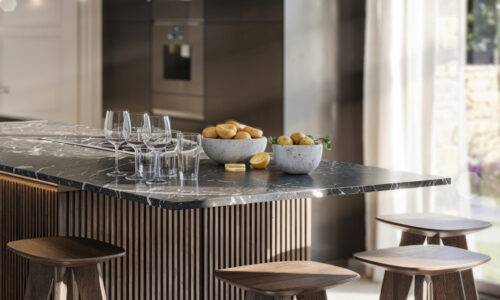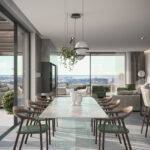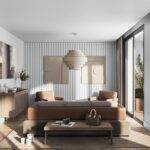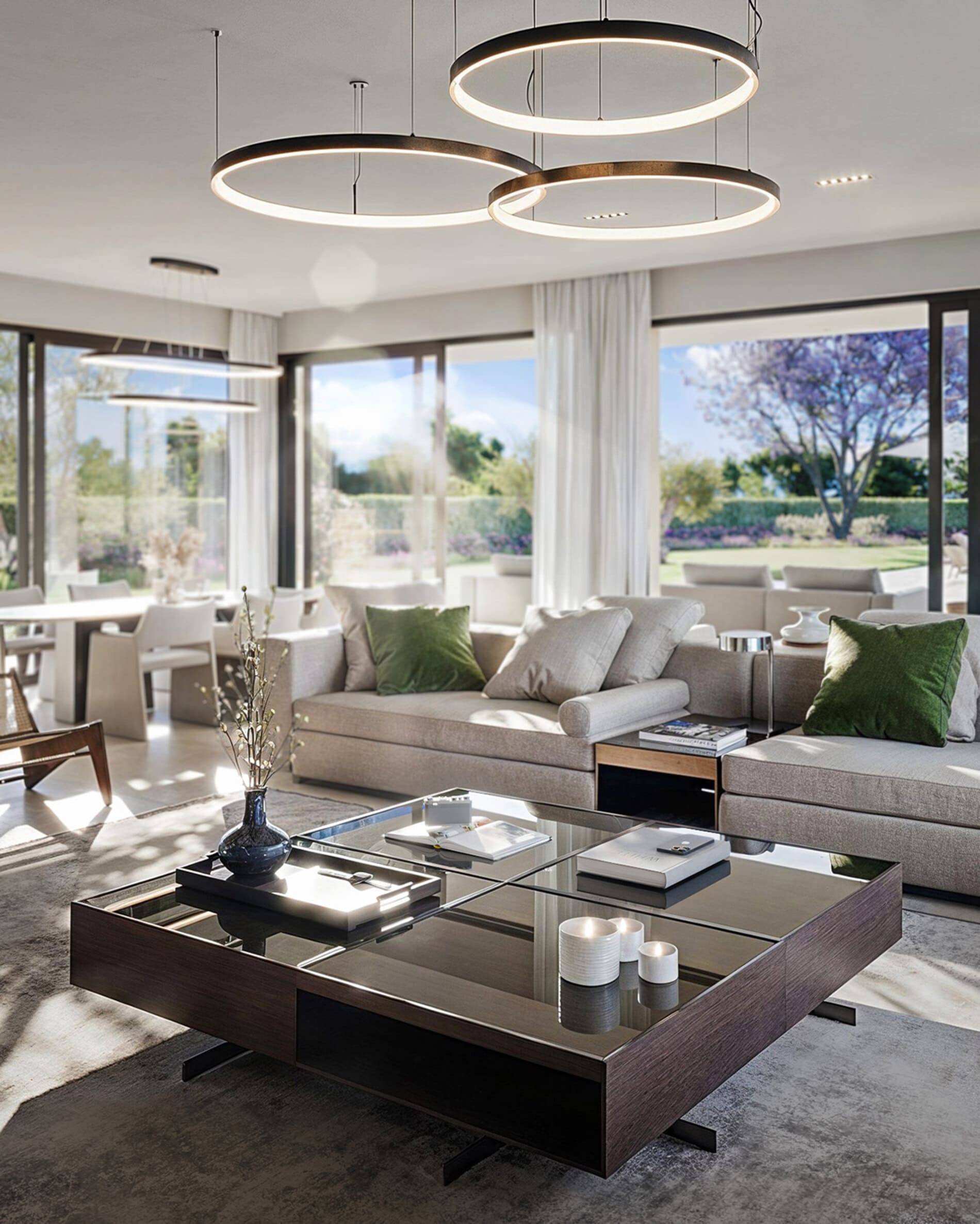
PBR Materials in Photorealistic Renders
- Alejandro Postigo
- July 30, 2024
- Diseño 3D, Uncategorized
- importancia, materiales, materiales pbr, materials, pbr materials, photorealistic renders, renders, renders fotorrealistas
- 0 Comments
In the quest for perfection in architectural visualisation, photorealistic renders play a crucial role. One of the essential components that has revolutionised this field is the use of PBR (Physically Based Rendering) materials. At Zenit Visuals, we explain what PBR materials are, why they are important, and how they significantly improve the quality of photorealistic renders.
Read his article: Furniture Rendering: The Interior Design Revolution
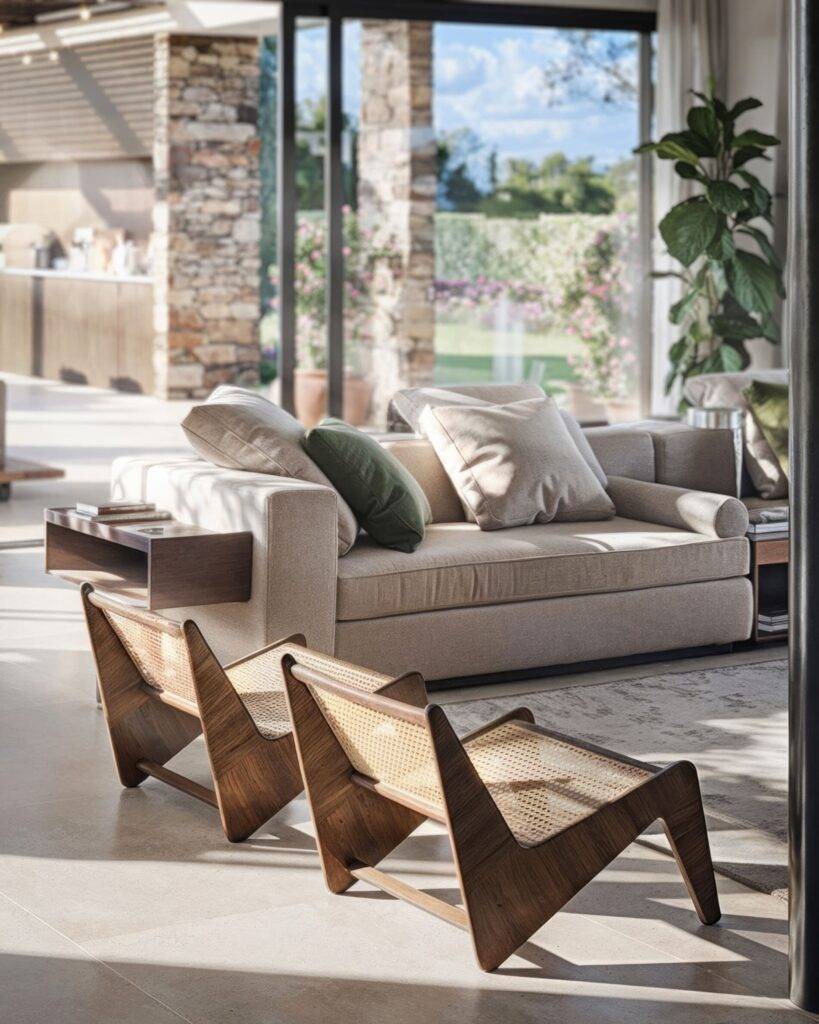
What are PBR Materials?
PBR, or Physically Based Rendering, is a technique that uses algorithms and mathematical models to simulate the interaction of light with materials in a more realistic way. PBR materials are based on physical principles, allowing for accurate representation of how light reflects, refracts, and disperses on different surfaces.
Components of PBR Materials
PBR materials generally consist of several texture maps that work together to create a realistic effect. The most common are:
- Albedo/Base Colour: Represents the base colour of the material without shadows or highlights.
- Normal Map: Adds details of small variations on the surface without increasing the number of polygons.
- Metalness: Indicates which parts of the material are metallic, affecting how they reflect light.
- Roughness: Controls the smoothness of the surface and how it scatters light.
- Ambient Occlusion (AO): Adds shadows in areas where natural light is partially blocked.
The Importance of PBR Materials in Photorealistic Renders
Realism and Accuracy: The main advantage of PBR materials is their ability to produce extremely realistic renders. By relying on physical principles, these materials ensure that the interaction of light with surfaces is as close to reality as possible. This means that materials will look natural and consistent under different lighting conditions.
Consistency in Different Environments: One of the most notable features of PBR materials is their consistency. Regardless of the lighting environment in which they are used, PBR materials maintain their realistic appearance. This is crucial for architectural renders, where materials must look correct both indoors and outdoors, and under various lighting conditions.
Efficiency in the Design Process: The use of PBR materials also improves efficiency in the design process. By providing an accurate and predictable representation of how materials will look, we can make informed decisions quickly. This reduces the time needed for adjustments and revisions, speeding up the production process of renders.
Flexibility and Customisation: PBR materials offer great flexibility and customisation possibilities. We can easily adjust the material parameters to achieve the desired look, from highly polished surfaces to rough and weathered textures. This customisation capability allows for the creation of unique renders tailored to the specific needs of each project.
Conclusion
PBR materials have revolutionised architectural visualisation by enabling the creation of photorealistic renders that are consistent, accurate, and highly customisable. Their ability to simulate the interaction of light with surfaces realistically not only enhances the visual quality of renders but also facilitates the design and decision-making process. If you are looking to take your projects to the next level with high-quality 3D renders, do not hesitate to contact us to discover how PBR materials can transform your architectural visualisations.
If you need more information or would like to hire any of our architectural visualisation services, please do not hesitate to contact us.
